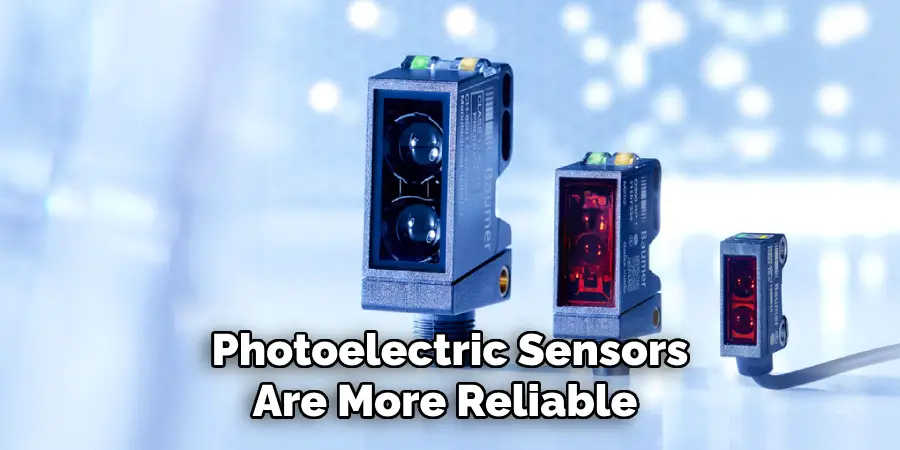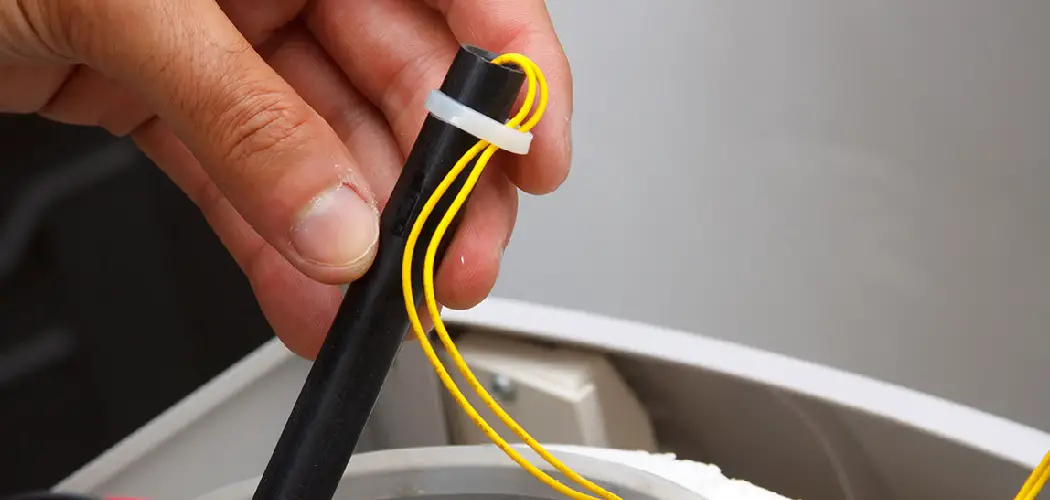Garage door sensors are essential safety devices that are installed to prevent accidents and injuries caused by closing garage doors. These sensors work by sending a signal to the door opener that stops the door from closing if there is an object in the way.

While there are many different types and brands of garage door sensors available, the installation process is very similar. In this blog, we will guide you through the process of how to wire a garage door sensor step by step.
Can You Wire a Garage Door Sensor?
Garage door sensors are a vital part of any garage door system. They provide an added layer of security, ensuring that the door stops moving if an object or person is detected in its path. But can you wire a garage door sensor yourself? The answer is yes, it is possible.
However, it’s important to remember that working with electrical wiring can be dangerous if you’re not experienced. Before attempting to wire your garage door sensor, ensure you have the necessary tools and knowledge to do so safely and effectively. With a little bit of research and patience, you’ll be able to wire your garage door sensor like a pro.
Why Should You Wire a Garage Door Sensor?
If you value safety and security, you should consider wiring a garage door sensor. The purpose of a garage door sensor is to detect any obstruction in the garage door’s path, which means it will prevent accidents and damage to your car or belongings. Additionally, by having a garage door sensor, you can increase the security of your home by preventing break-ins.
Intruders often use garage doors as an entry point into homes, but with a sensor in place, the garage door won’t open if an unauthorized person tries to force it open. With so many benefits to installing a garage door sensor, it’s a no-brainer to prioritize safety and security for you and your loved ones.
How to Wire a Garage Door Sensor – A Step-by-Step Guide
Step 1: Choose the Right Sensor
Before you begin, it is important to choose the right sensor for your garage door. The most common garage door types are infrared and photoelectric sensors. While both types work well, photoelectric sensors are more reliable and less likely to cause false alarms.

Depending on your preference, you can also choose from wired or wireless models. Once you have selected the right sensor, you can move on to the installation process.
Step 2: Locate the Sensor Wires
To begin wiring your garage door sensor, you need to locate the sensor wires. These wires are usually bundled together near the garage door opener unit. They are usually color-coded, with one wire being black or red and the other being white or green.
Step 3: Install Mounting Brackets
The next step is to install the mounting brackets for your garage door sensor. These brackets will hold the sensors in place and ensure that they are correctly aligned with each other. Mount the brackets on the top of the door frame, with one bracket on each side of the garage door.
Step 4: Wire the Sensor
Once you have installed the mounting brackets, the next step is to wire the sensor. Start by connecting the red or black wire to the positive (+) terminal of the garage door opener. Connect the white or green wire to the negative (-) terminal of the opener. Then, connect the corresponding wires from the sensor to the same terminals on the opener.
Step 5: Test the Sensor
After wiring your garage door sensor, it is important to test it to ensure it works correctly. To test the sensor, open the garage door and place an object in its path. The door should stop and go back up when it reaches the object. If the door does not stop and reverse, the sensor is not working correctly and needs to be adjusted or replaced.

Step 6: Secure the Wires
Once you have tested the sensor and confirmed that it is working correctly, it is important to secure the wires in place. Use wire clips or zip ties to keep the wires neatly organized and out of the way of moving parts.
Step 7: Regular Maintenance
Regular maintenance is important to ensure that your garage door sensor continues to work properly. Keep the sensors clean and debris-free, and check for any loose or damaged wires. Additionally, test the sensor periodically to ensure it still functions correctly.
Following these seven simple steps, you can successfully wire a garage door sensor and ensure that your garage door operates safely and efficiently. Remember to always follow proper safety precautions when working with electricity, and if you are unsure about any step, consult a professional. Now, you can enjoy the added security and convenience of a garage door sensor for your home. So go ahead and get started on wiring your own sensor today!
5 Considerations Things When You Need to Wire a Garage Door Sensor
1. Safety
Safety is the most important consideration when wiring a garage door sensor. It is essential to ensure that all connections are secure and that the wiring does not come into contact with other wires or objects. Additionally, it is important to ensure that the power source used for the sensor is properly grounded and protected from weather damage.
2. Compatibility
It is also important to ensure that the sensors you use are compatible with your garage door opener system. Different models of openers may require different types of sensors, so it is important to check before making any purchases. Additionally, some openers may require additional components, such as relays or switches, to work properly with the sensors.
3. Location
The location of the sensors on your garage door will also affect how they function. Generally speaking, it is best to place them at least 8 inches away from any moving parts in order to reduce false alarms and ensure reliable operation. Additionally, it is important to make sure that they are placed at an angle so that they can detect movement accurately and consistently.
4. Wiring Method
The type of wiring method used will also affect how well your garage door sensors work. For example, twisted pair wiring offers better protection against interference than standard wiring methods, while shielded cables offer greater protection against electrical noise and signal loss due to their metal shielding layer.

Depending on your specific needs, you may need to use one type of wiring over another for your system to work properly.
5. Maintenance
Finally, it is important to remember that regular maintenance will be necessary for your garage door sensors to continue working reliably over time. This includes checking all connections periodically for signs of wear or damage and replacing worn-out components as needed to keep everything running smoothly and efficiently.
Benefits of Wire a Garage Door Sensor
Installing a garage door sensor is one of the best investments for your home. Not only will it improve your family’s safety, but it can also save you money in the long run. By wiring a garage door sensor, you can receive notifications on your phone or smart device when your garage door is opened or closed.
This added security allows you to track who is accessing your garage. Plus, a sensor can help you avoid costly repairs by alerting you to any malfunctions or abnormalities with your garage door. Overall, a garage door sensor is a wise investment that will provide you with peace of mind and added convenience.
Some Common Mistakes People Make When Trying to Wire a Garage Door Sensor
Without a doubt, the garage door sensor is an essential component of any garage door system. However, wiring a garage door sensor can be a tricky affair, even for skilled technicians. Unfortunately, people often make several mistakes when installing or wiring these sensors.

Common mistakes include improper placement, incorrect wiring, or failing to follow the manufacturer’s guidelines. These errors can result in malfunctioning sensors, which could compromise safety. If you’re having issues with your garage door sensor or need to install a new one, it may be best to bring in a professional to ensure everything is done correctly. It’s always better to be safe than sorry.
Conclusion
Now that you know how to wire a garage door sensor, you can install one to protect your family and your property from accidents caused by garage doors. Always follow the manufacturer’s instructions and safety guidelines when working with electricity.
Do not hesitate to seek professional assistance if you are unsure about any aspect of the installation process. With proper installation and maintenance, your garage door sensor will provide you with years of reliable and safe service.


